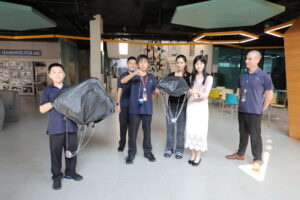
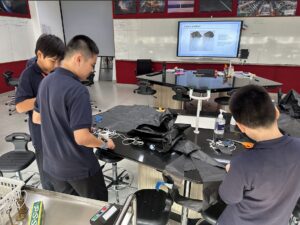
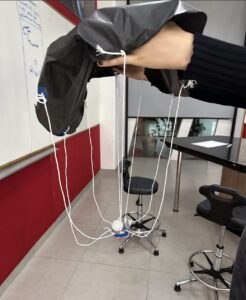
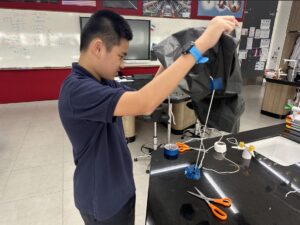
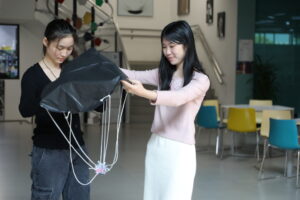
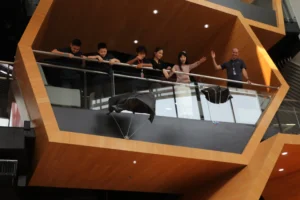
Fostering the next generation of science
Fostering the next generation of science
Session focus: The Effect of Surface Area on Air Resistance and Average Velocity






We let the younger students take more initiative in today’s science practical of building parachutes to investigate the effect of surface area on air resistance. To add an extra layer to the classic experiment, we presented the students with a challenge: to design a parachute that falls slowly enough to prevent a ping pong ball from falling out of a plastic cup attached to it.
With one session (an hour) allocated for this activity, the students eagerly delved into designing and testing their parachute models. They brainstormed, and experimented with different designs to optimise their parachutes. As the session went on, the students began to exchange ideas and adjusted their models, and worked diligently to improve their prototypes.
Finally, when everyone had completed their parachute designs, we gathered on the second floor to test them. We released each parachute, observing how they descended. To our delight, four out of the five models successfully met the challenge, showcasing the students’ problem-solving skills.
To conclude the activity, we instructed the students to measure the time it took for each parachute to fall using a stopwatch. This additional step allowed them to collect data and draw conclusions about the relationship between surface area and air resistance.
• Plastic Cups (1 per parachute)
• Ping Pong Balls (1 per parachute)
• Thin, Lightweight Material (e.g., plastic bags, tissue paper, or lightweight fabric)
• Scissors
• Tape
• Stopwatch or Timer
• Measuring Tape or Ruler
• Marker or Pen (for labeling)
• Optional: Additional Weight (e.g., small washers or paperclips) for adjusting parachute descent speed
Introduction (10 minutes):
• Briefly introduce the concept of air resistance and its impact on falling objects.
• Explain the objective of the experiment: to design and test parachutes to investigate the effect of surface area on
air resistance.
• Divide students into small groups and distribute materials.
Planning and Design (20 minutes):
• Allow students to brainstorm and plan their parachute designs.
• Encourage discussion within groups about how to maximize surface area while keeping the parachute lightweight.
• Provide guidance and answer any questions students may have about the design process.
Building Models (30 minutes):
• Instruct students to begin building their parachute models according to their planned designs.
• Assist students as needed with cutting materials, attaching strings, and securing parachutes.
• Encourage creativity and experimentation with different materials and designs.
Testing and Iteration (20 minutes):
• Designate an area for parachute testing, preferably from an elevated surface such as a balcony or staircase.
• Instruct students to attach the ping pong ball to their parachute and prepare for testing.
• One by one, students will release their parachutes and observe the descent.
• Encourage students to measure the time it takes for the parachute to reach the ground using a stopwatch or timer.
• After each test, calculate the average velocity of the parachute
Conclusion and Discussion (10 minutes):
• Gather students together to discuss their observations and results.
• Facilitate a discussion on the relationship between surface area and air resistance, based on the performance of
different parachute designs.
• Encourage students to reflect on what they learned from the experiment and how they could improve their designs
in the future.